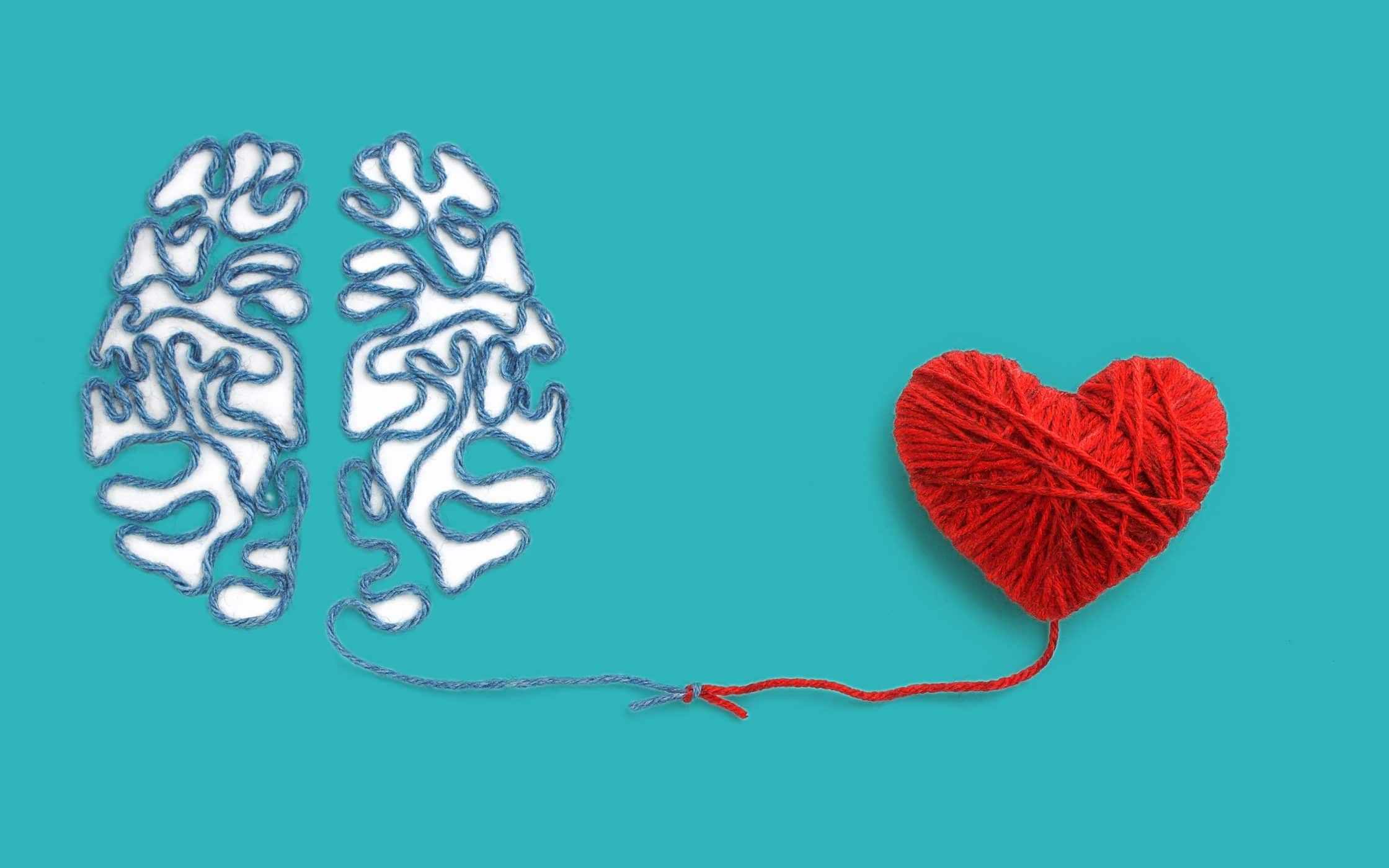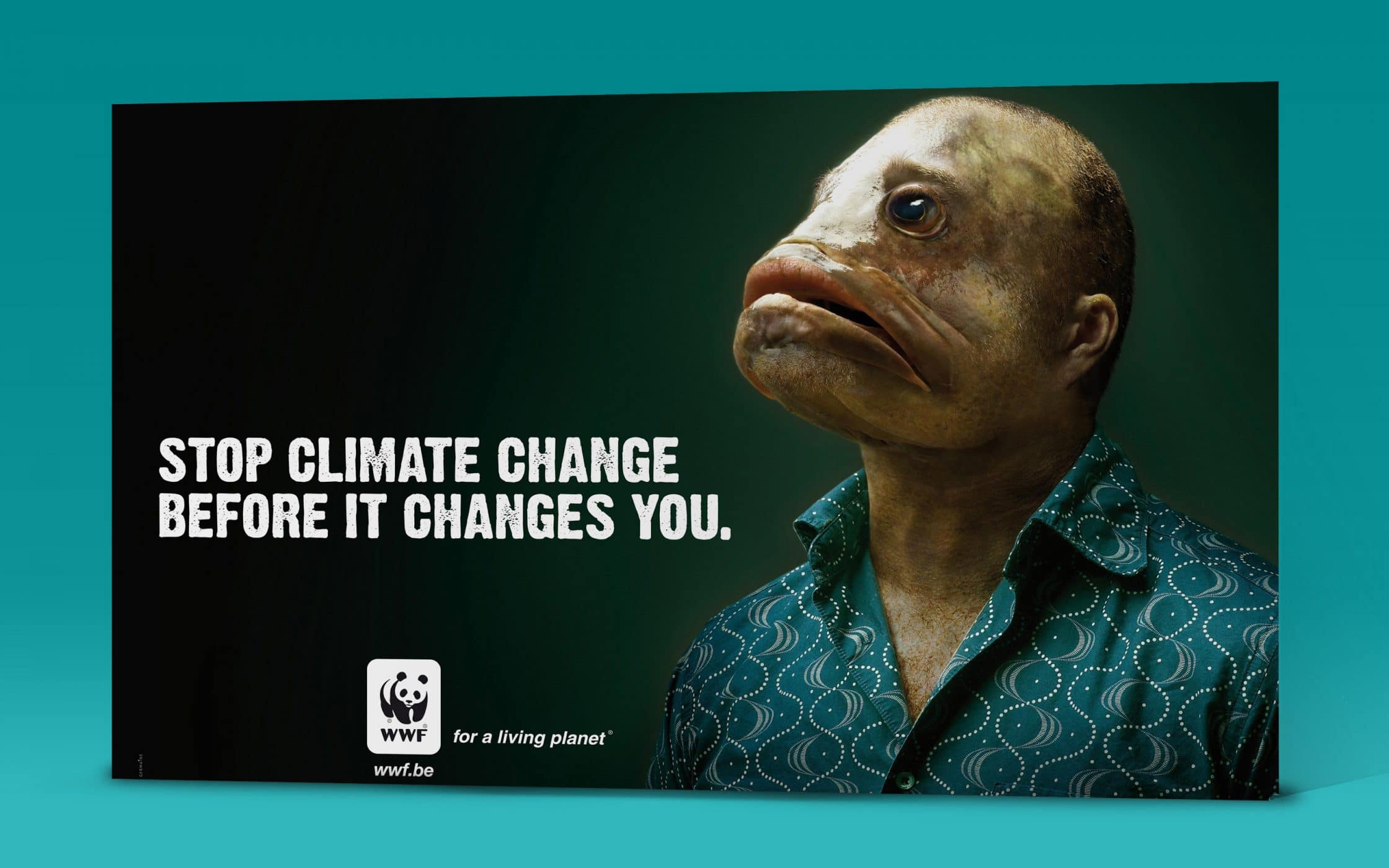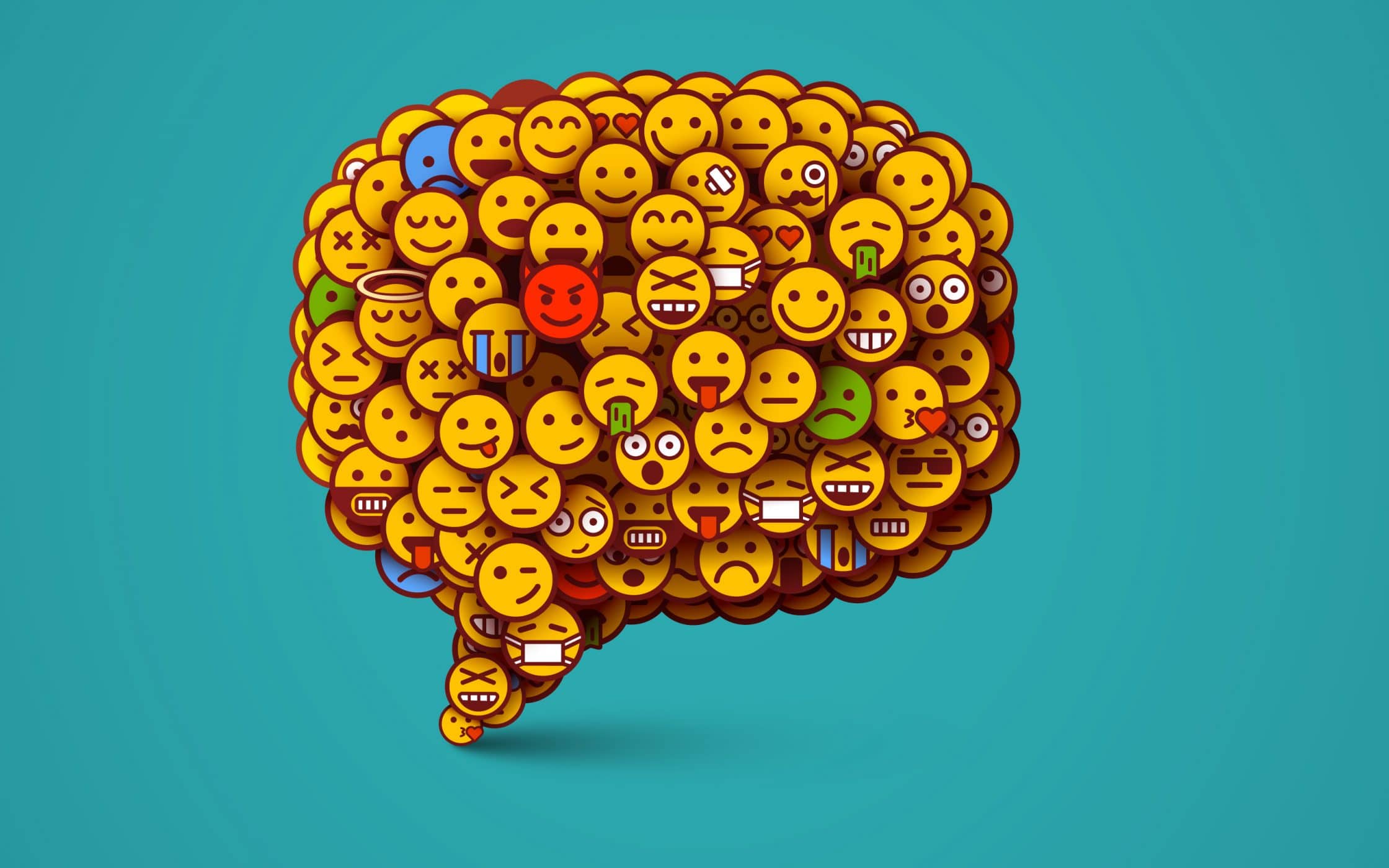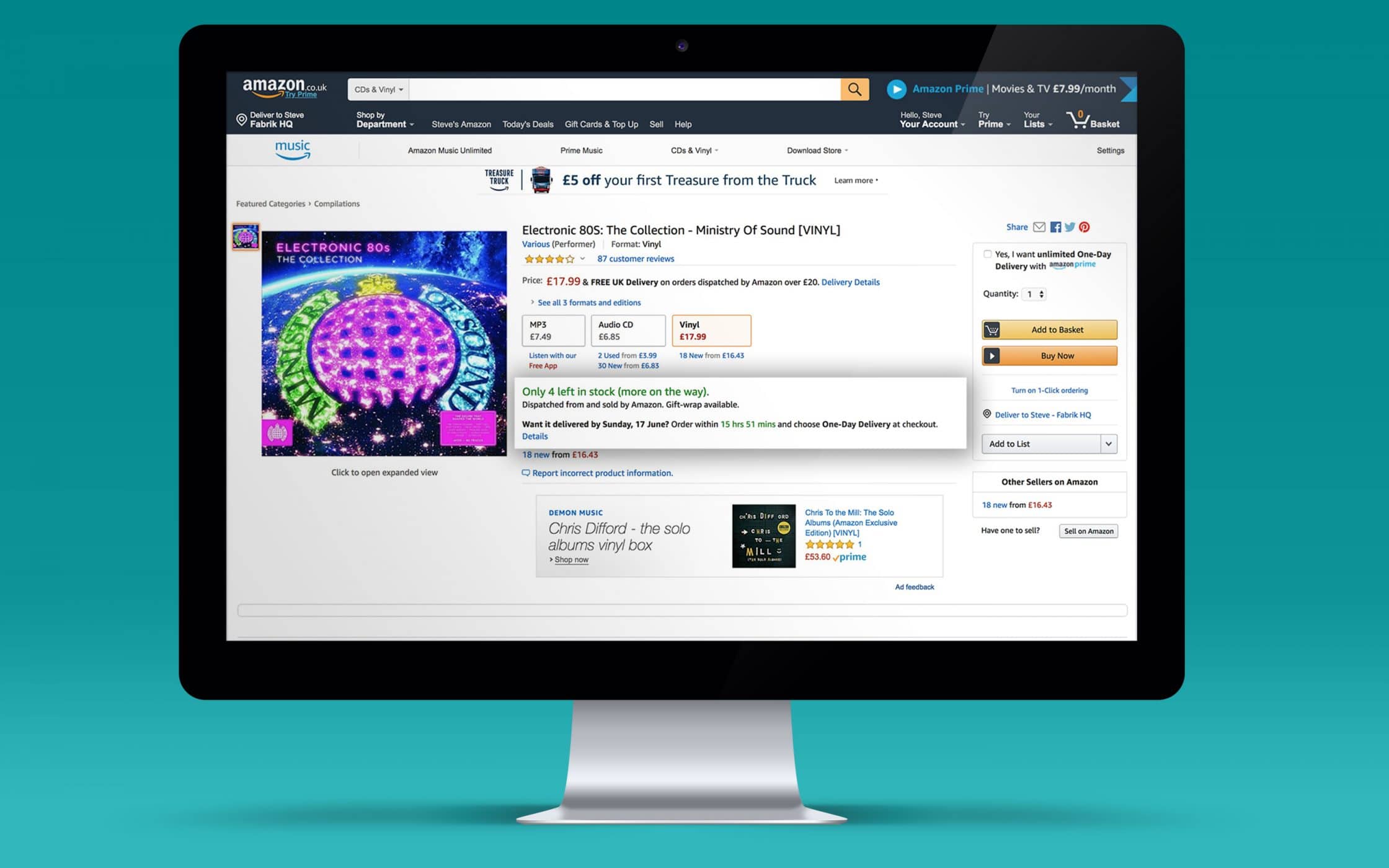The power of emotional marketing: Once more with feeling

No matter how much you like to think of yourself as a rational, logical person – human beings are slaves to emotion.
It doesn’t matter how many pro/con lists you make, or how often you tell yourself that you’ll “sleep on it”. The truth is that the majority of your decisions are made based on how you feel at the time. Psychologists have found that humans think second and feel first. When we’re confronted with sensory information, the emotional part of our brain can process information in one-fifth of the time it takes the cognitive part.
Emotional marketing tells a story that connects audiences with brands in a personal, and human way. As new media channels, devices, and platforms emerge, they ensure that people have plenty of access to brand stories. What’s more, there are now a host of ways for companies to convey their identity and vision, making emotional marketing much simpler.
When used correctly, emotional marketing strategies help companies to differentiate themselves in a challenging environment, bringing passion and focus to a corporate entity. However, if you want to have the right impact on your audience, you’ll need to make sure that your campaign feels authentic and honest.
The question is, “How do you get to the heart of emotional marketing?”

Getting to the heart of advertising: What is emotional marketing?
Before we start offering up ideas for your emotional marketing campaigns, let’s start with a quick insight into what this term really means. The role our feelings play in our decisions is something that today’s marketers can’t afford to ignore. In a fast-paced world, organisations need to make sure that they’re appealing to their buyer persona’s primal wants and needs.
In a study conducted at the University of Southern California, researchers found the people with impaired performance in the emotional region of their brains were able to think critically but unable to make decisions because they had no understanding of how they felt about their options.
While scientists often brag about how complex the human brain is, the truth is that most of our modern emotions stem from a handful of base feelings. The way we perceive happiness, sadness, fear, and anger determine how we make some of our most complicated decisions. For instance, in the marketing world:
Happiness = More shares
When it comes to understanding emotional appeal in marketing, scientists have found that positive emotions are more likely to convince us to share, retweet, and link our friends, than negative feelings. This means that marketers can improve their brand reach simply by highlighting positive news or using words that appeal to the “happy” part of the brain.
Sadness: More clicks
While happiness might compel us to share our experiences with our friends and loved ones, sadness has undeniable intrigue. Research finds that words with negative connotations generally lead to a higher click-through rate. In fact, an Outbrain study found that negative superlatives like “worst” or “never”, work 30% more than a headline without a superlative when it comes to grabbing attention. What’s more, positive superlatives like “best” were significantly less appealing. Negative words had a 63% higher click-through rate than their positive counterparts.

Creating your emotional marketing campaigns: Which emotions work?
So, how can you make sure you’re building your emotional marketing strategies around the right feelings?
Crack open a dictionary or thesaurus, and you’ll find literally hundreds of words describing the different emotions we experience each day. Surprise, excitement, apathy, overwhelm. How do you combine all of those different things into an emotional marketing definition that informs your team?
Well, it may be simpler than you’d think. In 2014, the Institute of Neuroscience and Psychology found that all human emotion is based on four feelings: happiness, sadness, fear/surprise, and anger/disgust. With those four options in mind, let’s take a look at how you can use emotional appeal in marketing:
1. Happiness
All companies want their brands to be associated with happy, smiling customers, right? Positivity has a knack for increasing engagement and shares. In fact, a study conducted in 2010 covering the most-emailed New York Times articles discovered that emotional articles received the most shares, and positive posts got more attention than negative ones.
For a glimpse into how powerful emotional marketing strategies can be when you add happiness to the mix, you only need to take a look at the Android “Friends Furever” campaign from 2015. By pairing cute animals together, the tech company made their audiences smile and achieved the coveted status of a “viral” campaign.
2. Sadness
So, if all brands want to make their customers happy, why do we bother with other emotions in their emotional marketing strategies? The simple answer is that different feelings promote different results. In recent years, companies have begun to recognise the value of using emotional content to tug at the heartstrings of their customers.
Essentially, if you make your customers feel sad, and then promise them that you have the solution to do something about their negative feelings, you can rest assured that they’ll be more likely to act. For instance, MetLife Hong Kong created an ad campaign featuring a daughter describing the things she loves about her dad. The campaign starts off as heart-warming, then gradually becomes heart-breaking as the little girl describes the various ways her father lies to her.
3. Fear/surprise
Fear is a natural human instinct, and something we all feel at times. Whether you’re shrieking at a spider in the bathtub or fretting about the state of the world we live in today – fear is everywhere. In the world of emotional marketing campaigns, fear prompts people to act through urgency and a desire for self-preservation.

As a Mad Men episode once told us: Happiness is “freedom from fear”. For marketing professionals, fear is a far more complex emotion to work with than sadness or happiness. Take your fear-mongering too far, and you can end up angering your customers instead. One particularly nerve-wracking ad campaign that emerged in recent years came from the World Wildlife Fund. The WWF begged us to stop climate change, with creepy imagery designed to stick with their audience.
4. Anger/disgust
While most companies assume that it’s best to avoid angering their customers, this negative emotion can have a powerful impact in the right circumstances. Emotional marketing strategies that use feelings of anger and disgust can shake people out of their stupor and into action. When we see an injustice in the world that we want to change, we’re driven to do something about it.
For instance, the New York Times advert “The Truth is Hard” demonstrates how difficult it is for people in the modern world to get honesty in their media today. In a world of “fake news”, The New York Times used their advertisement to demonstrate their own commitment to honesty and transparency.
Finding the emotional appeal in marketing
Whether you’re launching a startup or running a successful business, emotional marketing is one of the easiest ways to make sure that your brand stands out. With emotion, you can build a real connection with your audience that goes beyond simply selling a product or service. After all, in such a crowded marketplace, it’s not enough to just have a great USP, you need your audience to buy into your brand’s ideology and values too.
Whatever you’re selling, an emotional marketing strategy can help your advertising campaigns to have more impact. So, which components do you need to consider when you’re trying to leverage emotional appeal in marketing?
1. Colour
We’ve discussed the psychology of colour in branding before here at Fabrik. Psychology shows us that the right shades can scientifically alter a person’s psychological, emotional, and behavioural state. While the cool blue of Facebook conveys a feeling of trust and reliability, the bright red of Coca-Cola indicates passion and excitement.
Many marketers take advantage of the colour phenomenon by getting to know their target audience and thinking carefully about the emotions they want to portray. The right shade could be the difference between an audience that trusts you, and customers that question your every move.
2. Content
Human beings love stories – it’s part of our nature. Ever since we were children, we’ve been learning about the world through carefully-crafted stories that spark our imaginations and generate an emotional response. Stories activate the parts of our brain that convince us we’re actually experiencing the story for ourselves, through a scientific process called neural coupling.
An emotionally-charged story in your content marketing campaign can even be enough to trigger the release of dopamine in a customer’s brain. This makes them feel happy and ensures that they have memories of your brand that will stick with them for longer.
3. Behaviour
When it comes to marketing, your emotional impact isn’t just conveyed by the words you say or the images that you use, but the things you do, too. Guerrilla marketing tactics and experiential campaigns that get you out there and involved with the community you’re trying to appeal to can improve the emotional weight of your marketing strategies.
For instance, if you claim to care about the environment, and you get involved with local sustainability drives to clean up your community, your customers can see that you’re authentic and credible. This builds an emotional connection based on feelings of affinity and trust.

Tips for your emotional marketing strategy
We all like to think that we’re rational creatures. However, the truth is that everything we do is based on emotion. Even if you don’t notice that it’s your feelings that are in the driver’s seat, decisions as small as what you should eat today, or what kind of movie you want to watch on Netflix can all be influenced by the way you feel.
With emotional marketing strategies, brands and advertising companies can work with the power of emotions to develop stronger connections between companies and their customers. Here are just a few of the ways that you can use your emotional marketing definition to make an impact on your audience.
1. Create a sense of urgency
Emotional marketing doesn’t have to be all about making your customers feel warm and fuzzy. Sometimes, it’s about pushing them to do something, with feelings of anxiety, fear, and urgency. For instance, when you give people too much time to decide, you can rest assured that they’ll postpone until they forget about you entirely.

On the other hand, if you give your clients a limited-time offer, like Amazon does, for instance, you push them to engage, and reduce your risk of losing the sale, thanks to “FOMO”. Nobody wants to miss out on something great. That’s why fear is one of the most powerful components of emotional marketing.
2. Build trust through user generated content
Want to make your customers feel happy when they think of your brand? A great way to do that is with user-generated content in your marketing campaigns. Today, all of your customers are looking for signs that they can trust your company, and the products or services you’re selling. Around 93% of consumers think that UGC is helpful when they’re making purchasing decisions.
With user-generated content like reviews and testimonials, you can spark a stronger sense of belonging in your followers, which prompts feelings of loyalty and affinity. In a world where people are hardwired to search for support from their peers, this sense of belonging can be incredibly powerful. For instance, yoghurt brand Chobani increased their sales by 225% with their “Share your Chobani story” campaign, asking users to submit videos and photos that showcased what they loved about the product.
3. Surprise and delight your audience
Psychology Today suggests that consumers use emotions rather than information when they’re evaluating a brand. That means that if you really want to capture your audience’s attention, you need to do something to shake them out of their stupor. Surprising your audience with a unique and emotional campaign is a great way to engage your customers and keep your company top of mind.
The best way to surprise your audience in a positive way is to get to know them and figure out what matters to them. For instance, the Lean Cuisine brand knew that their customers were looking to get fitter, but that they also didn’t want constant judgement from companies who told them to watch their weight and count calories. With their #WeighThis, experiential campaign, they surprised their customers by reminding them that there’s more to a person than what they weigh.
4. Consider nostalgia
One of the more recent emotional marketing strategies to appear in the digital world of late has focused on the power of nostalgia when it comes to building brand connections. As the world becomes more technology-focused, many of us are looking back fondly at the days when things were simpler. This opens up a world of opportunities for companies who know how to embrace feelings of nostalgia in their campaigns.
For instance, after Netflix added Bob Ross’s classic television show “The Joy of Painting” to their roster, Ross became a trending topic around the world. Adobe decided to make the most of this fact, and embrace the benefits of nostalgic marketing with their very own “The Joy of Sketching” ad.
Marketing to move you: Emotional marketing examples
Here at Fabrik, we don’t just think that emotional marketing strategies are powerful, we know it. For instance, one interesting research study found that:
- Emotional marketing outperforms non-emotional marketing strategies at almost every level, with better results on profit, share gain and revenue.
- Video content that causes strong emotional responses is doubly likely to be shared.
- 70% of viewers who experienced an emotional response to a campaign were more likely to buy the product.
Ultimately, an emotional marketing strategy is all about establishing a connection with your audience. In the digital marketing world, employing emotion allows experts to bridge the gap between consumer and brand, turning standard clients into life-long advocates.
Thanks to social media and the rise of the digital world, there’s never been a better time for advertising campaigns to pull at the heartstrings of their audience members. Here are just a few emotional marketing examples to inspire and move you.
1. Emotional marketing that inspires: Nike
While part of the draw of emotional marketing campaigns is that they help to build stronger connections with your audience, another benefit is that they can inspire people to act. When you know what motivates your target audience, you can use those inspirational emotions to improve sales and enhance customer loyalty.
In some cases, companies can achieve more inspirational marketing campaigns by simply connecting their brand to the right influencer or spokesperson. For instance, sports brands like Gatorade and Nike have mastered using athletes like Michael Jordan and Serena Williams to their advantage. On the other hand, using the “anger” emotion to highlight an injustice, then fighting back against that problem in your campaign can be a great way to inspire. For instance, Nike’s advertisement highlighting professional female athletes from Arab countries draws attention to the restrictions that some women still face around the world.
2. Emotional marketing with aspirations: GE
Emotional marketing is powerful because it pushes your audience to think and act differently. Often, it taps into an audience’s dreams and desires. Whether it’s a drinks company telling their audience that they can achieve refreshment with a delicious beverage, or a sports company selling the ideal body, we appeal to what our customers want.
Showing your clients that your values and theirs are aligned is a great way to bring more emotion to your marketing while improving your brand impact too. With aspirational campaigns, you can demonstrate your shared vision, and bring your customer’s dreams to life. For instance, that’s exactly what GE accomplished when they encouraged more women to enter STEM fields with their campaign “What if Millie Dresshaus was treated like a celebrity?“
3. Emotional marketing that connects: Lysol
Love is perhaps one of the most raw and significant emotional marketing strategies of all. A campaign that appeals to what your customers truly care about reminds them that there’s more to your company than making a profit and selling products. In a world where people care about experiences more than the price or features of a product, emotional marketing campaigns that allow you to connect to your audience on a deeper level are worth their weight in gold.
Advertising strategies based on love humanise your company and give depth to your brand personality. Just look at Subaru’s long-lasting association with love in all of their marketing campaigns, or the ADT “Always there” campaign. Lysol’s “Protect like a Mother” campaign appeals to mothers by demonstrating how far a mother will go to keep their little one safe.

Is it time to invest in emotional marketing strategies?
Ultimately, no matter how logical you consider yourself to be, the truth is that we all make decisions based on our emotions.
Princeton psychologists found that our first impressions form in a fraction of a second, which means that we don’t have the time to logically think about things before we decide how we feel about them. If companies want to appeal to their audiences’ reptilian brains, then they’ll need to find ways of reaching out to the part of the brain that thrives on emotions and gut instincts.
At the end of the day, emotion is the glue that binds brands and customers together. If it wasn’t for the emotional appeal in marketing today, we’d all have a much harder time making purchasing decisions – whether we were investing in new marketing software or buying a sandwich for lunch.
As customers become more focused on the importance of relationships in their buying decisions, people from all backgrounds have begun to align themselves with the brands that reflect their personal values and speak to their emotions. If you can add emotional marketing campaigns to your strategy, you could benefit from bigger profits, stronger revenues, and happier long-term customers.
Is it time for you to get emotional?
If you enjoyed this article, you might enjoy these too:
— Ways to develop better brand communications
— The art of self-promotion without selling out











